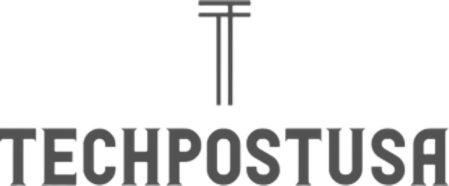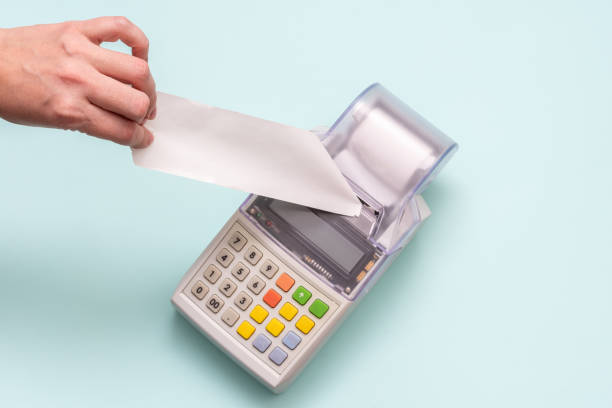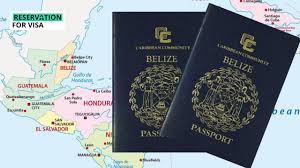Cloud POS Printers vs. Traditional Printers: What’s the Difference?
In the ever-evolving landscape of retail and hospitality technology, the role of printers within the Point of Sale (POS) system has transformed significantly. Businesses are increasingly demanding speed, flexibility, and remote capabilities, leading to the emergence of cloud POS printers as an alternative to traditional models. For businesses aiming to streamline operations and enhance customer experience, understanding the key differences between cloud POS printers and traditional printers is critical. This article explores both technologies in depth, helping you determine which type of printer aligns best with your current and future business needs.
Defining POS Printing Technologies
POS printers are essential for producing receipts, tickets, kitchen orders, and transaction records. Whether you’re running a retail store, café, or event-based business, the efficiency and reliability of your POS printer directly affect your service speed and operational smoothness. Traditionally, these devices were directly connected to local terminals or computers. However, with cloud computing becoming a cornerstone of modern business infrastructure, POS printers have also evolved, shifting from local-only functionality to more dynamic, internet-connected devices.
Understanding Traditional POS Printers
Traditional POS printers operate on a direct connection model, where the printer is physically linked to a terminal via USB, Serial, or Ethernet cables. These printers require local software installations and drivers and are typically only accessible through the terminal they’re connected to.
Advantages of Traditional Printers
Traditional POS printers are known for their reliability and speed. Because they rely on direct hardware connections, data transfer is quick, ensuring almost instantaneous receipt printing. This makes them ideal for high-volume environments such as supermarkets, food service counters, and retail stores where uninterrupted workflow is critical. They are also generally more straightforward to set up in a basic POS system since they don’t rely on an internet connection or cloud services. Their compatibility with most standard POS systems makes them a solid choice for smaller businesses with static setups.
Limitations of Traditional Printers
While these printers provide robust performance in fixed locations, their limitations become evident in more modern, agile business setups. Traditional printers are not easily scalable and typically require dedicated IT management for driver installation, updates, and troubleshooting. Adding new printers or adjusting printer configurations often demands physical access and manual setup. Additionally, remote access or centralized control is difficult without complex networking configurations.
The Rise of Cloud POS Printers
Cloud POS printers are designed to integrate directly with cloud-based POS systems, offering enhanced connectivity, remote accessibility, and streamlined management. Rather than being tethered to a local terminal, these printers receive print commands through the internet, allowing for a more flexible and scalable setup.
Benefits of Cloud POS Printers
One of the biggest advantages of cloud POS printers is their accessibility from virtually anywhere. Managers can control multiple printers across different locations from a single dashboard, ideal for franchises or businesses with multiple outlets. Cloud integration allows for real-time updates, simplified maintenance, and centralized device management without the need for local IT intervention. Cloud POS printers are also better suited for mobile and tablet-based POS systems, often used in modern restaurants, food trucks, or service-based businesses. They support remote printing, meaning receipts or kitchen tickets can be printed at a different location from where the transaction is made. This improves workflow and reduces wait times in complex environments. Integration with analytics platforms and cloud reporting tools also allows businesses to gain real-time insights into transaction trends, print volumes, and printer health. Many cloud printers support multiple operating systems and can be configured without drivers, reducing setup time significantly.
Challenges of Cloud POS Printers
Despite their advantages, cloud printers are dependent on stable internet connectivity. In areas where Wi-Fi or mobile networks are unreliable, this can result in printing delays or service interruptions. Additionally, while many cloud POS systems support a wide range of hardware, not all printers are universally compatible. Businesses must ensure their printer supports the desired cloud platform. Security is another consideration. Although cloud POS printers often use encrypted data channels, businesses must take precautions to secure their networks and user access. Subscription costs and licensing fees associated with cloud POS platforms may also increase overall expenses compared to more basic traditional setups.
Feature-by-Feature Comparison
Understanding how cloud and traditional POS printers differ in specific functions helps clarify which option is best suited for your operations.
Installation and Configuration
Traditional POS printers often require manual driver installations, specific port configurations, and physical cabling. This can be time-consuming during setup or when expanding your POS system. Cloud POS printers, on the other hand, often offer plug-and-play capabilities. Many connect through web interfaces or QR-code pairing, reducing the setup time and technical skill required.
Connectivity and Accessibility
Traditional printers rely on a direct connection, making them dependent on the terminal they are linked to. This restricts printer placement and accessibility. Cloud printers can connect via Wi-Fi, LAN, or mobile networks and accept jobs from any authorized device on the network, increasing flexibility.
Maintenance and Troubleshooting
With traditional POS printers, troubleshooting typically involves physical inspection and manual resets. Software updates must be performed locally, often requiring system downtime. Cloud POS printers offer remote management tools, real-time monitoring, and automatic firmware updates, helping prevent issues before they escalate.
Scalability
Scaling a system with traditional printers involves buying and installing new units at each terminal, configuring software, and often adding new wiring. Cloud POS printers allow businesses to scale faster by managing devices remotely and integrating new printers with minimal configuration. This is especially beneficial for rapidly growing businesses or those operating across multiple locations.
Performance and Speed
Traditional printers usually offer slightly better raw speed due to the stability of a wired connection. In high-traffic environments, this can mean faster customer service and less queue buildup. However, cloud printers have narrowed the performance gap significantly. Most models now provide fast, efficient service, especially in environments with strong internet infrastructure.
Real-World Application Scenarios
Different business environments call for different POS printer setups. Choosing between cloud and traditional options depends heavily on the size, structure, and goals of your business.
Retail Stores
For small retail businesses with one or two checkout points, traditional printers may offer all the functionality needed. However, multi-location retailers or those looking to integrate inventory and sales systems may benefit more from cloud POS printers that offer centralized control.
Restaurants and Cafés
Restaurants with table service, kitchen stations, and front counters benefit from cloud POS printers, especially when paired with handheld POS devices. Orders can be sent directly to the kitchen or bar, reducing delays and minimizing human error. Traditional printers still work well in fixed cashier setups but lack the fluidity required in dynamic service environments.
Event-Based and Mobile Businesses
Mobile vendors, pop-up shops, and event-based businesses rely on adaptability. Cloud POS printers, often portable and network-independent, enable businesses to print receipts from a tablet or phone while on the move. Traditional printers, which require physical setup and power, are often impractical in such scenarios.
Franchises and Multi-Outlet Operations
Businesses operating across multiple locations require centralized management of their printing operations. Cloud POS printers provide remote monitoring, standardized configurations, and integrated reporting. Traditional printers would require location-specific management, which can become inefficient at scale.
The Future of POS Printing
As digital transformation continues to reshape commerce, cloud-based technologies are becoming the new standard. POS printers are evolving alongside this trend, with more models offering hybrid connectivity options supporting both local and cloud-based operations. Businesses are also beginning to leverage cloud platforms for analytics, automation, and machine learning, which traditional printers cannot support without additional hardware or software. The demand for real-time insights, seamless updates, and mobile access will likely make cloud POS printers the go-to solution in the near future. However, for some businesses, especially those in areas with unstable internet or fixed terminal setups, traditional printers will continue to offer dependable performance.
FAQs
What is the main difference between cloud POS printers and traditional printers?
Cloud POS printers connect over the internet and support remote management, while traditional printers connect directly to POS terminals via cables and require local management.
Do cloud POS printers require a constant internet connection?
Yes, cloud POS printers need a stable internet connection for optimal performance. However, some models offer local fallback printing in case of network disruption.
Can traditional printers be upgraded to cloud-compatible?
Some traditional POS printers can be upgraded using third-party cloud connector devices or software bridges, but this often involves additional configuration and may not offer full functionality.
Are cloud POS printers more expensive?
Cloud printers may have higher initial or subscription costs, but they offer savings in scalability, maintenance, and centralized control, making them more cost-effective in the long run for many businesses.
Is one type of printer more secure than the other?
Both can be secure if properly configured. Cloud printers require secure network practices and account controls, while traditional printers benefit from the simplicity and security of direct, wired connections.
Conclusion
Choosing between cloud POS printers and traditional printers is not about one being universally better than the other, but rather about matching your business needs with the right technology. Traditional printers continue to offer unmatched speed and simplicity for fixed, high-volume environments, while cloud POS printers bring flexibility, scalability, and centralized control qualities essential for modern and growing businesses. Whether you’re upgrading your system or planning a new venture, evaluating your specific use case is crucial to making the right choice. For those seeking innovative, high-performance POS printers with future-ready features, HPRT offers solutions that align with both traditional reliability and cloud-based flexibility.
Author Bio:
Alex Chen is a retail technology analyst and a product expert in HPRT’s advanced POS printing solutions. He helps businesses navigate the evolving world of POS hardware with practical insights and detailed comparisons. Visit HPRT to learn more and explore industry-leading printing solutions tailored to your needs.




